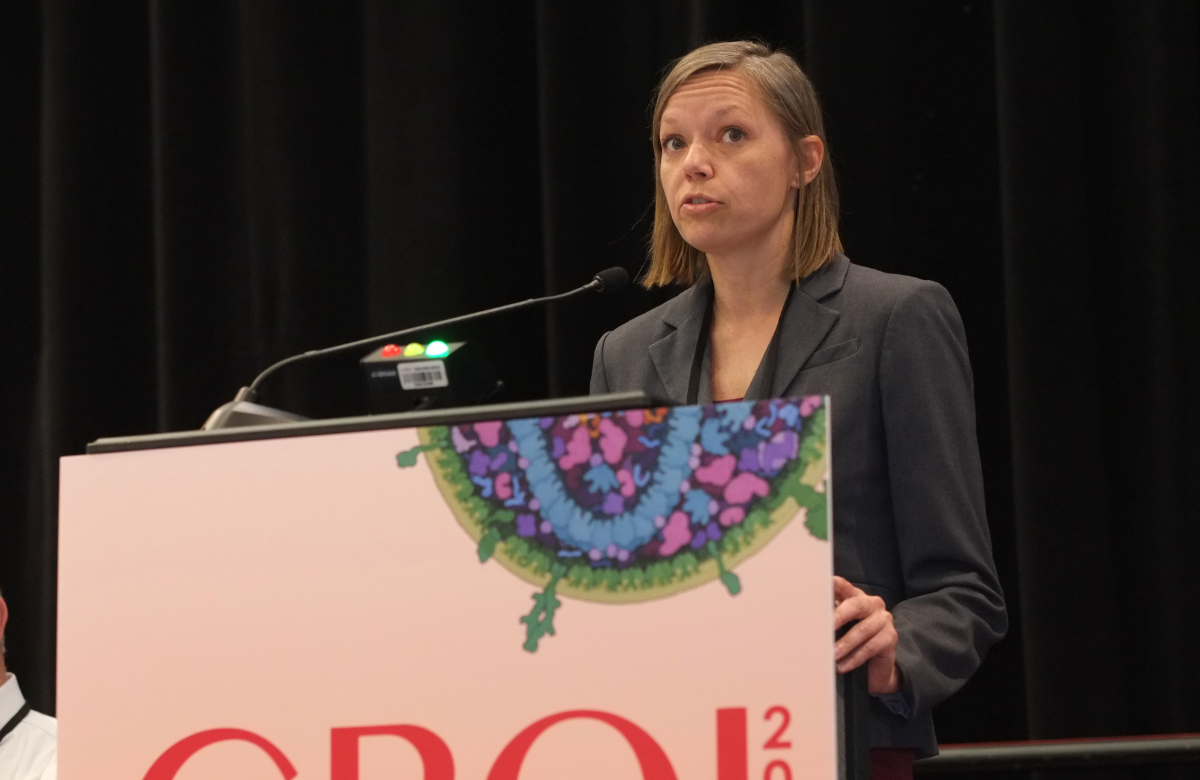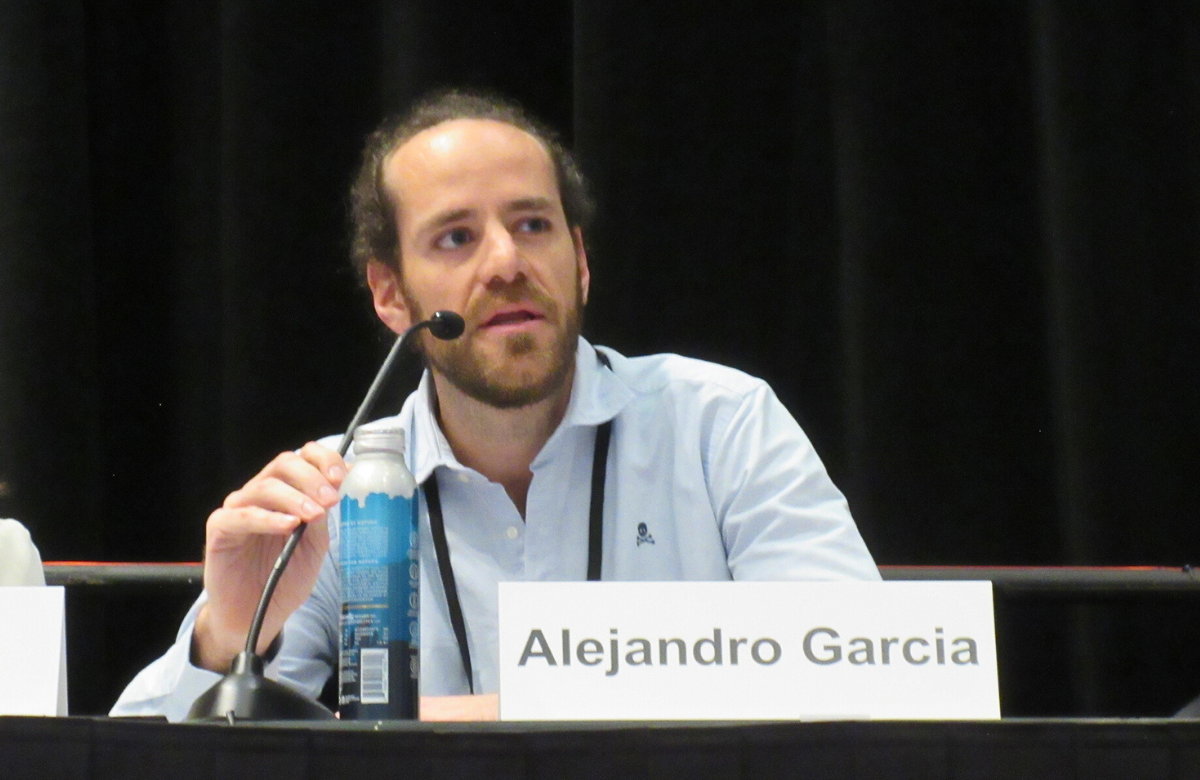Once-yearly PrEP with lenacapavir moves closer

Annual injections of the antiretroviral drug lenacapavir might provide effective protection against HIV infection, according to research presented last week at the Conference on Retroviruses and Opportunistic Infections (CROI 2025) in San Francisco and published in The Lancet.
The phase I trial, led by Dr Renu Singh, director of clinical pharmacology at Gilead Sciences, evaluated two different formulations of lenacapavir administered as two 5ml intramuscular injections in the buttocks. This differs from the twice-yearly formulation, which is given as a subcutaneous injection into the fat layer below the abdominal skin.
Results showed that both formulations maintained drug concentrations above the effective level for at least 56 weeks. The median peak concentrations (247.0 ng/ml for the first formulation and 336.0 ng/ml for the second) substantially exceeded those seen with twice-yearly lenacapavir (67.3 ng/ml). Even at week 52, the lowest concentrations remained higher than those observed with the twice-yearly formulation in previous efficacy trials.
Side effects were generally mild to moderate, with injection site pain being the most common (reported by 75-80% of participants). This pain typically resolved within a week and could be reduced by applying an ice pack before injection. Notably, the nodules under the skin commonly experienced with subcutaneous injections were not reported with these intramuscular formulations.
"Once-yearly intramuscular lenacapavir for PrEP has the potential to improve PrEP uptake and persistence and thus improve the scalability and public health impact of PrEP in populations who would benefit most," said Dr Singh. She also noted, "As a clinical pharmacologist, it gives me great pleasure to see a small molecule last this long – it has never been done before."
Gilead plans to skip phase II trials and move directly to phase III studies in the second half of 2025, potentially seeking approval from drug regulators in 2027. The company has previously committed to working with manufacturers to produce generic versions for more than 100 resource-limited countries with high HIV incidence. However, access remains a growing concern given recent cuts to US foreign aid programmes, including PEPFAR, which is the main funder of PrEP worldwide.
Doravarine / islatravir matches standard HIV treatment regimens

Two studies presented at the conference have confirmed that a new two-drug combination of doravirine / islatravir works as well as standard HIV treatments in keeping viral loads suppressed in adults with HIV.
The phase 3 clinical trials evaluated a daily dose of doravirine / islatravir (100mg/0.25mg), using a lower dose of islatravir than in previous studies to address concerns about lymphocyte suppression at higher doses. Both studies enrolled participants who were already on successful HIV treatment with suppressed viral loads and randomised them 2:1 to either switch to doravirine / islatravir or continue their existing treatment.
In the first study, presented by Dr Amy Colson of Community Research Initiative in Boston, researchers enrolled 513 people taking Biktarvy (bictegravir / emtricitabine / tenofovir alafenamide). The second study, presented by Professor Chloe Orkin of Queen Mary University of London, included 551 participants taking various two- or three-drug regimens. Participants in both studies had been living with HIV for a median of 11-13 years, and about a quarter to a third were positive for hepatitis B core antibody.
After 48 weeks, both studies showed that viral suppression rates with doravirine / islatravir were comparable to standard treatments. In the Biktarvy study, 91.5% of those on doravirine / islatravir maintained viral loads below 50 copies/ml compared to 94.2% on Biktarvy. In Professor Orkin's study, 95.6% of those on doravirine / islatravir achieved viral suppression versus 91.9% on existing treatments.
Side effects were generally similar between groups in the Biktarvy study (10.2% vs 9.4%), while slightly more common with doravirine / islatravir in the second study (12.0% vs 4.9%). Importantly, no significant differences in lymphocyte or CD4 counts were observed between treatment groups in either study.
A few cases of low-level hepatitis B viraemia without clinical symptoms were noted in participants switching to the new regimen. In Professor Orkin's study, weight gain occurred specifically in participants switching from tenofovir disoproxil or efavirenz (which are known to suppress weight) to doravirine / islatravir, with these individuals gaining about 2kg more than those continuing these drugs. For participants not taking these specific medications, weight changes were minimal (approximately 0.3kg) regardless of treatment group.
"These results support doravirine / islatravir as an alternative to traditional multi-drug regimens, offering a simplified option for people with HIV who have no history of treatment failure or resistance," Professor Orkin concluded.
Event-driven PrEP for women may work, modelling study suggests

A mathematical model suggests that event-driven PrEP using tenofovir disoproxil / emtricitabine could work effectively for cisgender women having vaginal sex, challenging previous assumptions that this approach is only suitable for people having anal sex. The research indicates that women would need an additional day of dosing compared to the regimen recommended for gay and bisexual men.
Dr Mackenzie Cottrell of the University of North Carolina developed a model based on studies of drug absorption and clearance in different tissues. The model addresses key pharmacological differences affecting women. Drug levels of both tenofovir and its metabolite are 10-50 times lower in the female genital tract than in the rectum, and they fall more quickly below the concentration needed to prevent HIV.
While the standard ‘2-1-1’ dosing regimen (a double dose before sex, followed by single doses 24 and 48 hours later) is recommended for people having anal sex, Cottrell suggests women would need a ‘2-1-1-1’ approach.
According to the model, 2-1-1 dosing would prevent approximately 80% of HIV infections in women within five days of exposure. Adding a fourth pill (2-1-1-1 dosing) would increase efficacy to 94% within six days after exposure, with 80% protection maintained until day seven. Increasing to double doses on all four days would only extend the 94% efficacy level by one more day.
Cottrell noted that her findings from modelling should be tested in a clinical trial.
Positive interactions with healthcare workers improve HIV care retention in Africa

Three studies presented at CROI 2025 highlight the importance of effective healthcare engagement strategies for people living with HIV who have been lost to follow-up or disengaged from care.
The first study, conducted in rural Uganda, found that most people with unsuppressed HIV were already diagnosed but not in clinical care. Among the 17,841 people tested, 3170 were HIV positive, with 10% having viral loads above 1000 copies/ml. Overall, 83% of people with detectable viral loads were not in clinical care, and three-quarters had never started treatment. Those who had started treatment but discontinued typically dropped out within a year.
In Malawi, researchers evaluated different approaches to re-engaging men who either hadn't started antiretroviral therapy or had stopped treatment. A total of 569 participants were randomised to receive either person-centred counselling with the offer of an escort to the healthcare facility, the same plus home-based antiretroviral treatment initiation, or a stepped intervention that could escalate to professional mental health support. After nine months, there was no significant difference in treatment engagement between the three approaches (76% in the counselling arm, 72% in the home-based arm, and 85% in the stepped intervention arm). In-depth interviews with participants revealed that the most valued elements were counselling and positive interactions with healthcare workers, rather than the convenience of home-based treatment.
A third study in Zambia tested an intervention to promote friendlier, more person-centred attitudes among healthcare staff through training, coaching, measurement, feedback and incentives. The randomised trial involved 24 health facilities and 128,901 people with HIV who had been more than 30 days late for appointments. During the one-year follow-up period, 71% of those in the intervention group returned to care compared to 65% in the control group. After returning, people in the intervention group were less likely to experience another treatment interruption, and 58% of the intervention group were still in care one year later compared to 49% of the control group.
Injectable PrEP eliminates HIV infections among key populations in Brazil

There were zero HIV infections in a study providing long-acting injectable PrEP to gay, bisexual, transgender and non-binary people in Brazil, a country where HIV cases have continued to rise despite the availability of oral PrEP for more than a decade.
The ImPrEP CAB Brasil study, presented by Dr Beatriz Grinsztejn, enrolled 1447 participants across six Brazilian cities starting in late 2023. Participants could choose between injectable cabotegravir, administered every two months, or daily oral PrEP. Researchers compared these groups with 2411 people receiving oral PrEP from public health clinics.
The vast majority (83%) of study participants chose injectable PrEP, with 78% citing difficulties with daily medication adherence as their reason. Those who watched an educational video featuring community members explaining both PrEP options were more than twice as likely to choose injectable cabotegravir. The study population was diverse, with 38% of participants aged 18-24 and 60% identifying as Black, mixed race or other race.
The injectable PrEP group maintained 95% PrEP coverage throughout the study compared to just 58% for trial participants on oral PrEP and 48% for those at public clinics. Most importantly, there were zero HIV transmissions among those taking injectable PrEP, while incidence rates were 1.0 and 1.5 per 100 person-years in the oral PrEP groups.
"Injectable cabotegravir significantly improved PrEP coverage and protection, underscoring its potential as a tool in addressing adherence challenges with daily oral PrEP, particularly among young key populations," Dr Grinsztejn concluded.
Large fall in severe illnesses over two decades in Spain, while co-morbidities stay stable

New research from Spain shows a significant reduction in severe non-AIDS events among people living with HIV over the past 18 years, despite stable rates of other health conditions. The findings were presented at the conference by Dr Alejandro Garcia from Hospital Ramón y Cajal in Madrid.
The study used data from the CoRIS cohort, which has followed people with HIV in Spain since 2006. The analysis included 18,659 participants who were not on antiretroviral therapy when they entered the cohort. Researchers compared three time periods: 2006-2011, 2012-2017, and 2018-2023, focusing primarily on severe non-AIDS events (major cardiovascular events, non-AIDS cancers, and non-AIDS deaths). They also examined seven secondary outcomes including high blood pressure, type 2 diabetes, chronic kidney disease, bone fractures, and dementia.
Results showed that the prevalence of severe non-AIDS events decreased from 3.4% in 2006-2011 to 2.1% in 2018-2023, with a 32% decrease over time. This decline was most pronounced among people aged over 50.
The incidence of secondary events remained relatively stable across the study period, with no significant differences between time periods. However, chronic kidney disease showed an upward trend as people with HIV aged.
"We found significant reductions in the incidence of severe non-AIDS events and a delayed onset of these conditions in recent periods," Dr Garcia concluded. "There were no differences in the incidence of secondary events. Polypharmacy rose progressively, but the comorbidity burden didn't change throughout the study."
Broadly neutralising antibody N6LS shows promise in long-acting HIV treatment

A broadly neutralising antibody called N6LS could potentially partner with cabotegravir in a long-acting HIV treatment regimen, according to EMBRACE study results presented at CROI 2025.
The phase IIb trial enrolled 125 virally suppressed HIV-positive adults who were sensitive to N6LS. Participants were randomised to receive monthly injectable cabotegravir plus N6LS administered either by intravenous infusion or subcutaneous injection every four months, or to continue their standard treatment regimen.
After six months, viral suppression was maintained in 96% of those receiving N6LS infusions, 88% of those receiving N6LS injections, and 96% of those on standard care. Four participants experienced virological failure (two in each N6LS group), but all regained viral suppression when resuming standard oral treatment.
The treatment was safe with both administration methods, though subcutaneous injections caused more injection site reactions (51% versus 8% with infusions) and longer-lasting discomfort.
ViiV considers these results promising enough to advance to testing cabotegravir every other month plus N6LS infusions every six months. This regimen will face competion from Gilead's twice-yearly treatment combining lenacapavir with two broadly neutralising antibodies, also presented at CROI.
New long-acting HIV drugs show promising early results

Two experimental long-acting HIV medications have demonstrated potency comparable to current leading treatments in early clinical trials, according to research presented at CROI.
The phase 2a studies tested VH-184, a third-generation integrase inhibitor, and VH-499, a capsid inhibitor, in small groups of previously untreated adults with HIV. Both drugs were given orally in these trials to assess short-term efficacy, but are being developed as long-acting injectables that could potentially be administered every six months.
In the VH-184 trial, 19 participants received various doses of the drug over one week, while three received placebo. The highest dose produced a mean viral load reduction of 2.31 log10 copies/ml. Similarly, in the VH-499 study, 20 participants received the experimental drug and three received placebo, with the highest dose achieving a viral load reduction of 2.17 log10 copies/ml.
Both drugs were well tolerated with only mild adverse events reported. No resistance emerged to VH-184 during the brief study period, while one participant receiving the lowest dose of VH-499 developed a capsid inhibitor resistance mutation.
Phase 1 trials investigating injectable formulations of both drugs are already underway with HIV-negative volunteers.
Rare HIV acquisition in women with good adherence to TAF/FTC PrEP

New evidence presented at CROI 2025 in San Francisco shows that the alternative formulation of oral PrEP provides significant protection against HIV acquisition in women when taken consistently. This is the first study to test it with cisgender women.
The findings come from the PURPOSE 1 study, which involved 5338 women in South Africa and Uganda. The trial compared the HIV prevention efficacy of injectable lenacapavir with two types of oral PrEP: the established tenofovir disoproxil and emtricitabine (TDF/FTC), and the alternative formulation, tenofovir alafenamide and emtricitabine (TAF/FTC).
Dr Flavia Kiweewa of Makerere University in Uganda reported that among women allocated to TAF/FTC, all but two HIV acquisitions occurred in those taking fewer than three pills per week. Of these two cases, one involved a virus with significant resistance to both drugs. Based on this analysis, Dr Kiweewa calculated that women taking two or more TAF/FTC pills weekly experienced an 89% reduction in HIV acquisition risk.
While TAF is absorbed more rapidly by cells than TDF, this analysis does not provide sufficient data to determine whether TAF/FTC is more ‘forgiving’ of partial adherence than TDF/FTC. Drug regulators have not yet approved TAF/FTC for cisgender women due to the previous lack of studies in this population.
Sign up for aidsmap bulletins
This is the second of our three summary news bulletins from CROI 2025. The final one will be sent on Friday 21 March.
If you'd like to receive this final bulletin as an email, and any future bulletins, sign up at www.aidsmap.com/subscribe-email-bulletins
